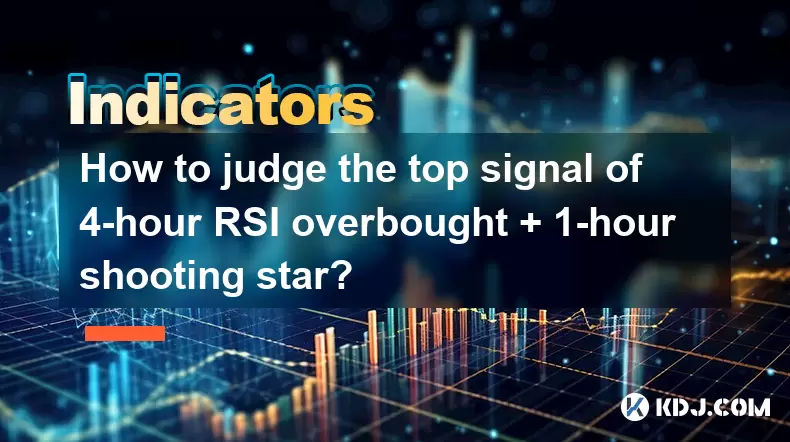-
 Bitcoin
Bitcoin $118000
0.67% -
 Ethereum
Ethereum $3750
0.71% -
 XRP
XRP $3.183
1.61% -
 Tether USDt
Tether USDt $1.000
-0.01% -
 BNB
BNB $788.1
1.21% -
 Solana
Solana $186.0
0.85% -
 USDC
USDC $0.9999
-0.02% -
 Dogecoin
Dogecoin $0.2373
1.25% -
 TRON
TRON $0.3204
1.76% -
 Cardano
Cardano $0.8266
1.85% -
 Hyperliquid
Hyperliquid $44.04
1.28% -
 Sui
Sui $4.192
5.88% -
 Stellar
Stellar $0.4399
2.63% -
 Chainlink
Chainlink $18.40
1.19% -
 Hedera
Hedera $0.2842
9.06% -
 Bitcoin Cash
Bitcoin Cash $560.5
2.46% -
 Avalanche
Avalanche $24.99
4.58% -
 Litecoin
Litecoin $114.5
1.25% -
 UNUS SED LEO
UNUS SED LEO $8.980
-0.03% -
 Shiba Inu
Shiba Inu $0.00001406
0.53% -
 Toncoin
Toncoin $3.306
4.27% -
 Ethena USDe
Ethena USDe $1.001
0.03% -
 Polkadot
Polkadot $4.169
2.37% -
 Uniswap
Uniswap $10.56
1.95% -
 Monero
Monero $322.8
1.06% -
 Dai
Dai $0.0000
0.00% -
 Bitget Token
Bitget Token $4.545
0.12% -
 Pepe
Pepe $0.00001261
1.29% -
 Aave
Aave $296.5
1.27% -
 Cronos
Cronos $0.1379
5.90%
How to judge the top signal of 4-hour RSI overbought + 1-hour shooting star?
When the 4-hour RSI is overbought and a 1-hour shooting star appears, it signals potential reversal with higher confidence, especially if confirmed by volume and resistance levels.
Jul 26, 2025 at 11:07 pm

Understanding RSI Overbought Conditions on the 4-Hour Chart
The Relative Strength Index (RSI) is a momentum oscillator that measures the speed and change of price movements. When applied to a 4-hour timeframe, the RSI helps traders identify overbought or oversold conditions over a medium-term horizon. A reading above 70 is traditionally considered overbought, indicating that the asset may be overvalued and due for a pullback. However, an overbought signal alone does not guarantee a reversal. It merely suggests that upward momentum is strong and potentially unsustainable.
In the context of RSI overbought on the 4-hour chart, it's critical to assess whether the reading is sustained above 70 or if it briefly spikes and retreats. A sustained overbought condition, especially when accompanied by divergence (where price makes a higher high but RSI makes a lower high), increases the reliability of a potential reversal signal. Traders should also monitor volume during this phase—rising volume during an overbought condition may indicate strong buying pressure, whereas declining volume could suggest weakening momentum.
It's important to avoid acting solely on the RSI overbought signal. The cryptocurrency market often remains overbought for extended periods during strong bullish trends. Therefore, confirmation from other technical tools—such as candlestick patterns or trendline breaks—is essential before making a trading decision.
Interpreting the 1-Hour Shooting Star Candlestick Pattern
The shooting star is a bearish reversal candlestick pattern that typically forms after an uptrend. It is characterized by a small real body near the lower end of the trading range, a long upper wick, and little to no lower wick. On the 1-hour chart, this pattern suggests that buyers pushed the price higher during the session, but sellers stepped in and drove the price back down to close near the open.
For a valid shooting star:
- The candle must appear after a clear upward price movement.
- The upper shadow should be at least two to three times the length of the body.
- The lower shadow should be minimal or absent.
- The closing price should be near or at the low of the candle.
When this pattern forms on the 1-hour chart, it indicates short-term exhaustion in buying pressure. However, like the RSI overbought signal, the shooting star is not a standalone confirmation of a top. It gains significance when it aligns with other bearish indicators—such as the 4-hour RSI being overbought.
Combining 4-Hour RSI Overbought with 1-Hour Shooting Star
When both the 4-hour RSI is overbought and a 1-hour shooting star appears, the confluence of signals increases the probability of a price reversal. This combination suggests that medium-term momentum is stretched and short-term selling pressure is emerging.
To assess the strength of this signal:
- Confirm that the 4-hour RSI has been above 70 for at least one full candle or is showing signs of rolling over.
- Ensure the 1-hour shooting star forms at a key resistance level, such as a previous high or a Fibonacci extension.
- Look for increased volume on the shooting star candle, which validates the selling pressure.
- Check for bearish divergence on the RSI—price makes a higher high, but RSI fails to do so.
This multi-timeframe alignment provides a higher-confidence signal than either indicator alone. The 4-hour chart offers context, while the 1-hour chart offers timing. Traders often use this setup to consider short entries or to take profits on long positions.
Step-by-Step Confirmation Process for the Signal
To properly judge the top signal formed by 4-hour RSI overbought + 1-hour shooting star, follow these steps:
- Open both the 4-hour and 1-hour charts of the cryptocurrency pair (e.g., BTC/USDT) on your trading platform.
- Apply the RSI indicator (14-period default) to the 4-hour chart and observe if the value is above 70.
- Identify a recent uptrend on the 4-hour chart—look for a series of higher highs and higher lows.
- Switch to the 1-hour chart and scan for a candle with a long upper wick, small body, and close near the low.
- Verify the shooting star occurs after upward momentum—not in a sideways or downtrend.
- Check for confluence with support/resistance levels—does the shooting star form near a known resistance?
- Observe the next 1-2 candles after the shooting star—do they close lower? A bearish engulfing or dark cloud cover adds confirmation.
- Monitor RSI on the 1-hour chart—if it starts rolling over from above 70, it supports the reversal idea.
This process ensures that the signal is not based on isolated data but on a structured, multi-layered analysis.
Risk Management and Trade Execution
Even with a strong confluence signal, risk management is crucial in cryptocurrency trading due to high volatility. When acting on the 4-hour RSI overbought + 1-hour shooting star signal:
- Do not enter a short position immediately after the shooting star forms. Wait for confirmation—such as the next candle closing below the shooting star’s low.
- Place a stop-loss above the high of the shooting star candle to limit downside risk if the price continues upward.
- Set a take-profit level at the nearest support zone, measured using Fibonacci retracement (e.g., 50% or 61.8% of the prior move).
- Consider scaling out of the position—close part of the trade at initial support and let the rest run with a trailing stop.
- Avoid over-leveraging, especially in altcoins where price swings can be extreme.
Using a risk-reward ratio of at least 1:2 helps ensure that winning trades outweigh losses over time. Position size should be adjusted so that no single trade risks more than 1-2% of the total account balance.
Frequently Asked Questions
What if the RSI is overbought but the shooting star doesn’t form?
An overbought RSI without a confirming candlestick pattern like the shooting star suggests strong momentum but not necessarily an imminent reversal. Traders should wait for additional bearish signals before acting.
Can this signal appear in a ranging market?
Yes, but its reliability decreases. In a range-bound market, overbought RSI near resistance may lead to pullbacks, but the shooting star must align with the range boundary to be meaningful.
How long should I wait for confirmation after the shooting star?
Monitor the next 1 to 3 candles on the 1-hour chart. If they close below the shooting star’s low and show red (bearish) bodies, the reversal signal strengthens.
Does this strategy work on all cryptocurrencies?
It can be applied across major and minor cryptocurrencies, but liquidity and volatility matter. Highly illiquid altcoins may produce false signals due to manipulation or thin order books. Stick to well-established pairs with consistent volume.
Disclaimer:info@kdj.com
The information provided is not trading advice. kdj.com does not assume any responsibility for any investments made based on the information provided in this article. Cryptocurrencies are highly volatile and it is highly recommended that you invest with caution after thorough research!
If you believe that the content used on this website infringes your copyright, please contact us immediately (info@kdj.com) and we will delete it promptly.
- Meme Coins in July 2025: Bitcoin Takes a Backseat?
- 2025-07-27 10:30:12
- HIFI Price Eyes Breakout: Downtrend Line in the Crosshairs?
- 2025-07-27 10:30:12
- Troller Cat's Meme Economy Prowess: Presale ROI and Viral Domination
- 2025-07-27 10:50:12
- Bitcoin Price Tumble: Chart Patterns Point Downward?
- 2025-07-27 10:50:12
- Ethereum's Bullish Case: Flag Pattern Points to $4,800?
- 2025-07-27 11:10:18
- Ethena (ENA) & Anchorage Digital: A Genius Partnership Sparking a Stablecoin Revolution
- 2025-07-27 11:10:18
Related knowledge

What signal does the ROC send when it rises rapidly from a low level and breaks through the zero axis?
Jul 27,2025 at 10:15am
Understanding the Rate of Change (ROC) IndicatorThe Rate of Change (ROC) is a momentum-based oscillator used in technical analysis to measure the perc...

What does it mean that the rebound is blocked after the moving average is arranged in a short position for the first time?
Jul 26,2025 at 10:51am
Understanding the Short-Term Moving Average ConfigurationWhen traders refer to a 'short position arrangement' in moving averages, they are describing ...

What does it mean that the parabolic indicator and the price break through the previous high at the same time?
Jul 26,2025 at 07:22pm
Understanding the Parabolic Indicator (SAR)The Parabolic SAR (Stop and Reverse) is a technical analysis tool developed by J. Welles Wilder to identify...

What does it mean that the price falls below the short-term moving average after the RSI top divergence?
Jul 26,2025 at 11:01pm
Understanding RSI Top Divergence in Cryptocurrency TradingThe Relative Strength Index (RSI) is a momentum oscillator widely used in cryptocurrency tra...

What does it mean when the moving average is arranged in a bullish pattern but the MACD bar is shortened?
Jul 27,2025 at 06:07am
Understanding the Bullish Moving Average PatternWhen traders observe a bullish moving average pattern, they typically refer to a configuration where s...

What does it mean when the price rises along the 5-day moving average for five consecutive days?
Jul 26,2025 at 08:07am
Understanding the 5-Day Moving Average in Cryptocurrency TradingThe 5-day moving average (5DMA) is a widely used technical indicator in cryptocurrency...

What signal does the ROC send when it rises rapidly from a low level and breaks through the zero axis?
Jul 27,2025 at 10:15am
Understanding the Rate of Change (ROC) IndicatorThe Rate of Change (ROC) is a momentum-based oscillator used in technical analysis to measure the perc...

What does it mean that the rebound is blocked after the moving average is arranged in a short position for the first time?
Jul 26,2025 at 10:51am
Understanding the Short-Term Moving Average ConfigurationWhen traders refer to a 'short position arrangement' in moving averages, they are describing ...

What does it mean that the parabolic indicator and the price break through the previous high at the same time?
Jul 26,2025 at 07:22pm
Understanding the Parabolic Indicator (SAR)The Parabolic SAR (Stop and Reverse) is a technical analysis tool developed by J. Welles Wilder to identify...

What does it mean that the price falls below the short-term moving average after the RSI top divergence?
Jul 26,2025 at 11:01pm
Understanding RSI Top Divergence in Cryptocurrency TradingThe Relative Strength Index (RSI) is a momentum oscillator widely used in cryptocurrency tra...

What does it mean when the moving average is arranged in a bullish pattern but the MACD bar is shortened?
Jul 27,2025 at 06:07am
Understanding the Bullish Moving Average PatternWhen traders observe a bullish moving average pattern, they typically refer to a configuration where s...

What does it mean when the price rises along the 5-day moving average for five consecutive days?
Jul 26,2025 at 08:07am
Understanding the 5-Day Moving Average in Cryptocurrency TradingThe 5-day moving average (5DMA) is a widely used technical indicator in cryptocurrency...
See all articles

























































































